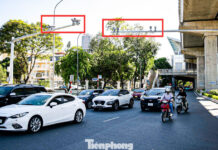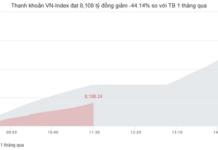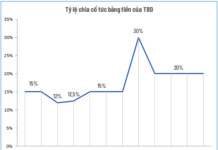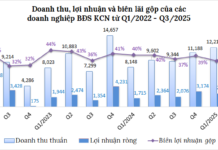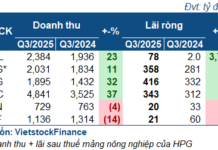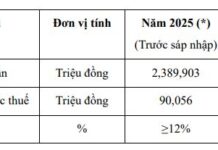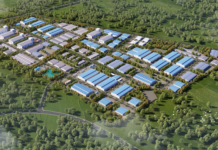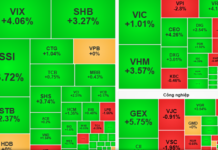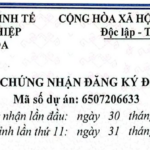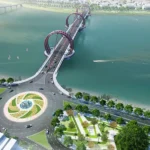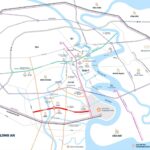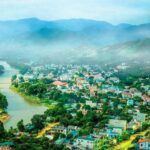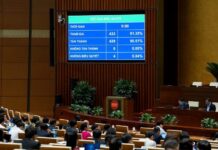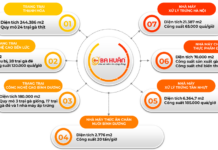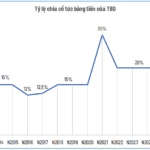Strategic Advantages and Outstanding Potential
Ninh Co Economic Zone (EZ), located in the southern tip of Ninh Binh province, is an important gateway for trade in Northern Vietnam, offering convenient transportation links to Northeast Asia and China.
Its well-developed transport infrastructure includes the North-South Expressway, the Ninh Binh – Hai Phong – Quang Ninh route, and water routes such as the Lach Giang – Hanoi and Cua Day – Ninh Binh. The area is also served by a 300,000 DWT seaport and has air connections via Noi Bai and Cat Bi airports. This multimodal connectivity optimizes logistics, attracting export-oriented industries, modern port services, and logistics businesses.

Ninh Co Economic Zone. Illustrative image.
Even before its official approval, Ninh Co EZ has already attracted significant investment interest. The total registered capital for projects in the zone stands at approximately VND 216 trillion (equivalent to USD 9.2 billion), reflecting investors’ strong confidence in the area’s development potential.
Several large-scale projects, with investments running into billions of dollars, have been and are being implemented. Notable examples include the Nam Dinh 1 BOT Thermal Power Plant with a total investment of VND 46,980 billion (nearly USD 2 billion), which contributes to energy security and provides stable electricity for industrial production. Another is the infrastructure development project in the Rang Dong Industrial Park, valued at VND 4,920 billion (around USD 203 million), which lays the foundation for various industries such as processing, textiles, supporting industries, and logistics.
The Xuan Thien Green Steel Complex, spanning 400 hectares, with a capacity of 9.5 million tons per year and a total investment of VND 98,000 billion, is a pioneer in Vietnam in applying electric arc furnace technology and using LNG, aiming towards green hydrogen. This project helps reduce CO₂ emissions by up to 86%, in line with Vietnam’s commitments at COP26.
In addition to its capital and infrastructure strengths, Ninh Co also boasts advantages in human resources. The current population of the area is around 67,000 (as of 2021), and it is projected to increase to 114,000 – 125,000 by 2040. Notably, the proportion of trained workers is expected to reach 85% by 2035, ensuring a skilled workforce for key industries.
Realizing the Vision
According to Decision 88/QD-TTg of the Prime Minister, the development of Ninh Co EZ is divided into three phases. Phase I (2024 – 2026): Complete the master plan and detailed planning at a scale of 1/2000, and commence construction of key infrastructure.
Phase II (2026 – 2030): Develop industry, services, and urban areas synchronously, focusing on high-tech green steel, export-oriented cement, clean energy, logistics, seaport services, coastal tourism, high-tech agriculture and fisheries. The target is to achieve economic growth of 14-15%/year, create about 55,000 jobs, contribute VND 3,000 billion/year to the state budget, and have 80% of the workforce trained.
Phase III (after 2030): Complete modern infrastructure, including multimodal transportation, a 300,000 DWT seaport, and a smart coastal city; become a leading multi-sector coastal economic zone in the Red River Delta, deeply integrated into regional and global supply chains.
The total capital requirement for Ninh Co EZ for the period 2021 – 2050 is estimated at VND 237,870 billion. The capital structure includes 10-15% from the state budget and 85-90% from socialization.
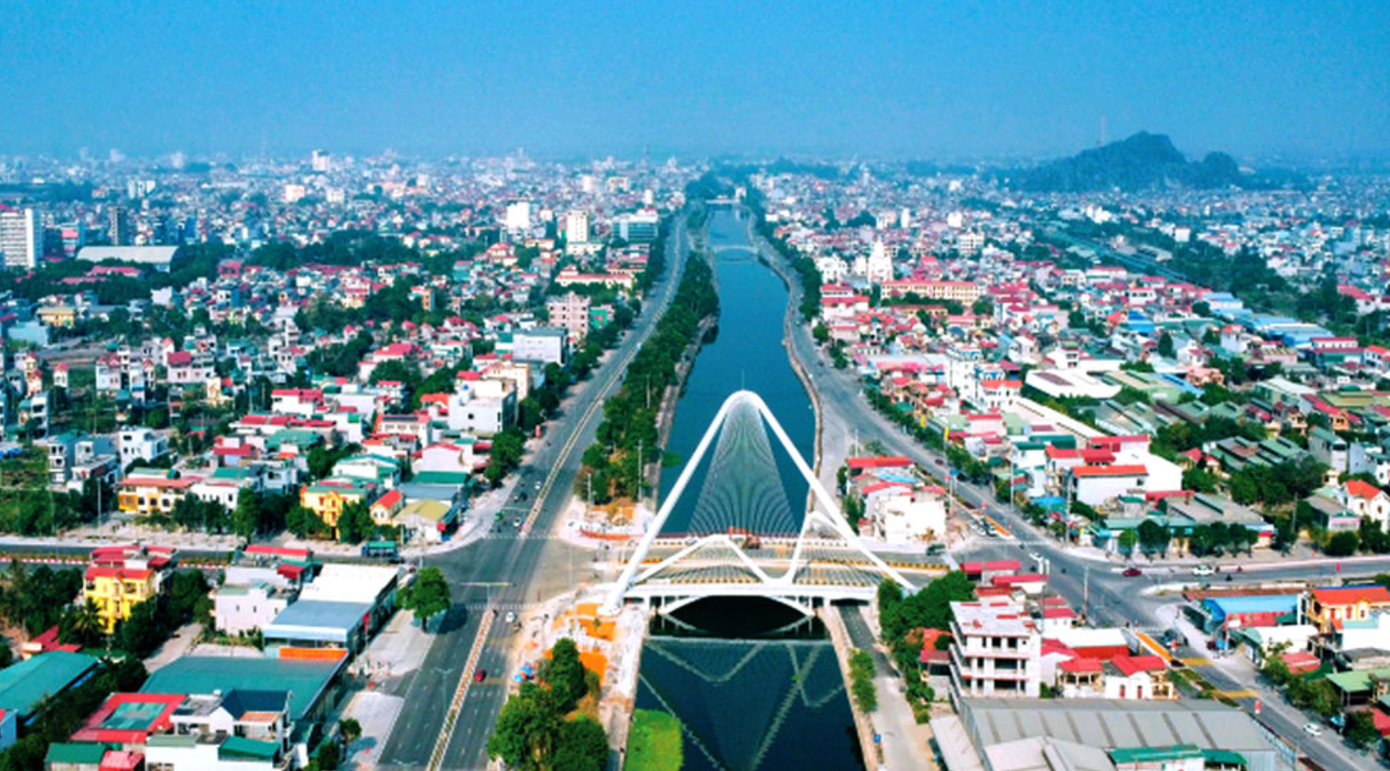
Synchronized infrastructure is an advantage for Ninh Co EZ.
Ninh Binh province has proactively learned from the experiences of similar coastal economic zones, restructured investment resources, applied a scientific phasing strategy, and focused on key projects. At the same time, the investment environment has been improved through administrative procedure reforms, investment promotion, and expanded cooperation with strategic investors and international organizations using advanced cooperation models.
Ninh Binh and the Northern region’s maritime transport system is flourishing, with cargo volume expected to increase significantly due to the influx of foreign investment. Simultaneously, the region’s arterial road network is being synchronously invested in, connecting coastal economic centers and counties with the national transportation system. This lays the foundation for the formation of modern coastal industrial parks, industrial clusters, and urban areas.
In line with Decision 88/QD-TTg, relevant departments and localities are working synchronously and urgently to effectively implement Phase I (by 2026). The focus is on completing the master plan and detailed planning at a scale of 1/2000 for functional subdivisions, industrial parks, seaports, tourism areas, service areas, and new urban areas.
Building the Tra Khuc 1 Bridge: A $95 Million Project to Enhance Vietnam’s Transportation Network
On August 9, the People’s Committee of Quang Ngai Province approved the Tra Khuc 1 Bridge project with a total investment of VND 2,199 billion.
The Rise of Southern Saigon: Real Estate Boom Near Phu My Hung
“Unveiling the secrets behind soaring land prices, Batdongsan.com.vn’s research data highlights the pivotal role of transportation infrastructure development. With a significant 41% influence, the construction of bridges, roads, and metros emerges as the prime mover. This is followed by a host of other factors, including the intricacies of urban planning, the psychological expectations of investors, population growth, and the ever-present demand for housing.”
Aqua City Accelerates Development After a Series of Positive Updates
Aqua City is bustling with construction and residents alike, having completed all legal procedures by the end of June. With an influx of new homeowners and an energetic vibe, the project is experiencing a newfound momentum. This surge propels the development towards becoming a model livable city and a pivotal growth center in the key economic region of Southern Vietnam.




